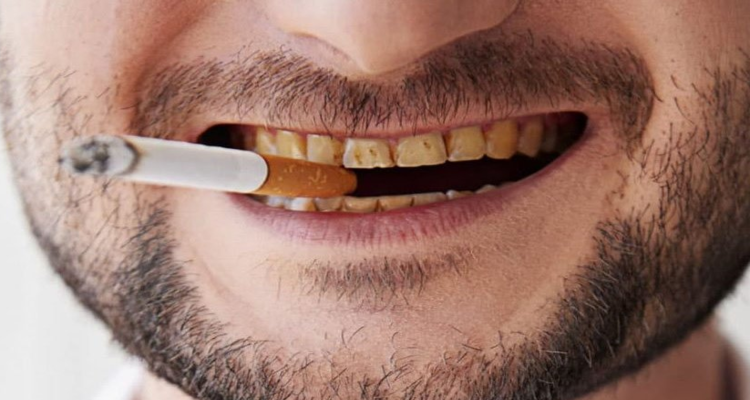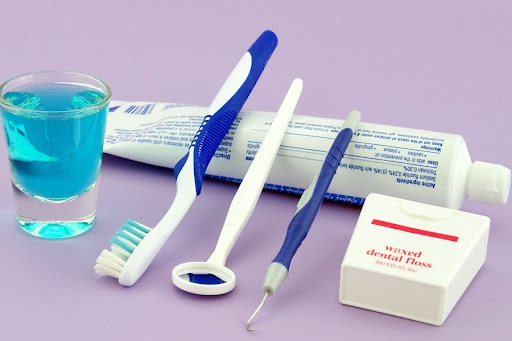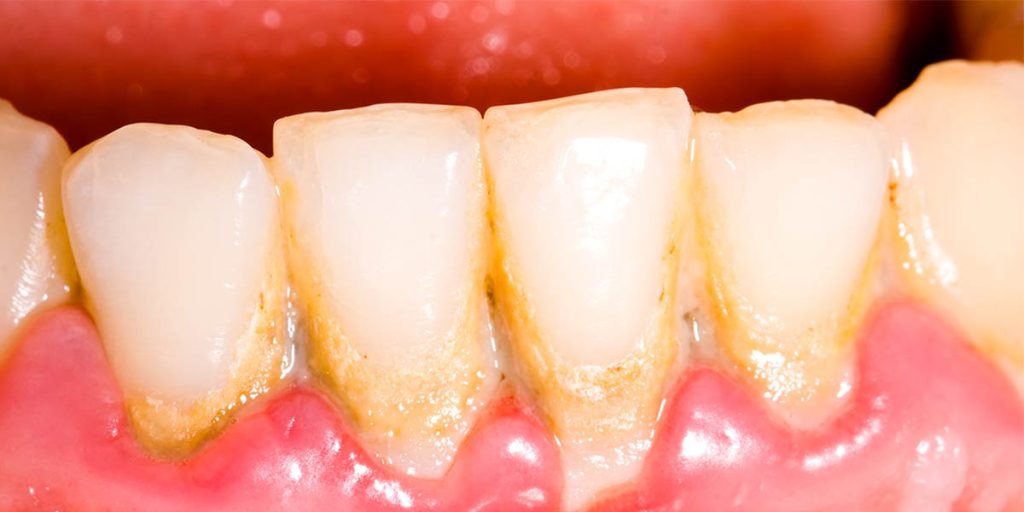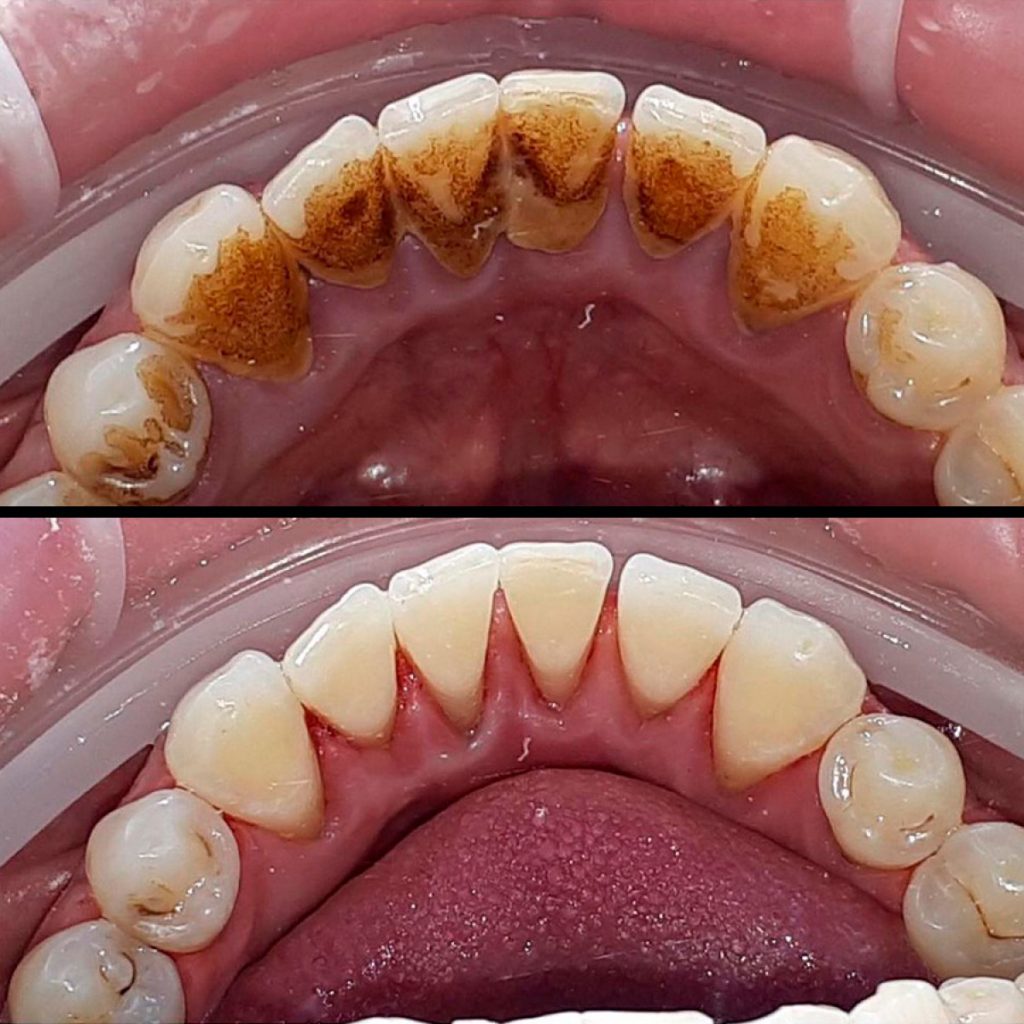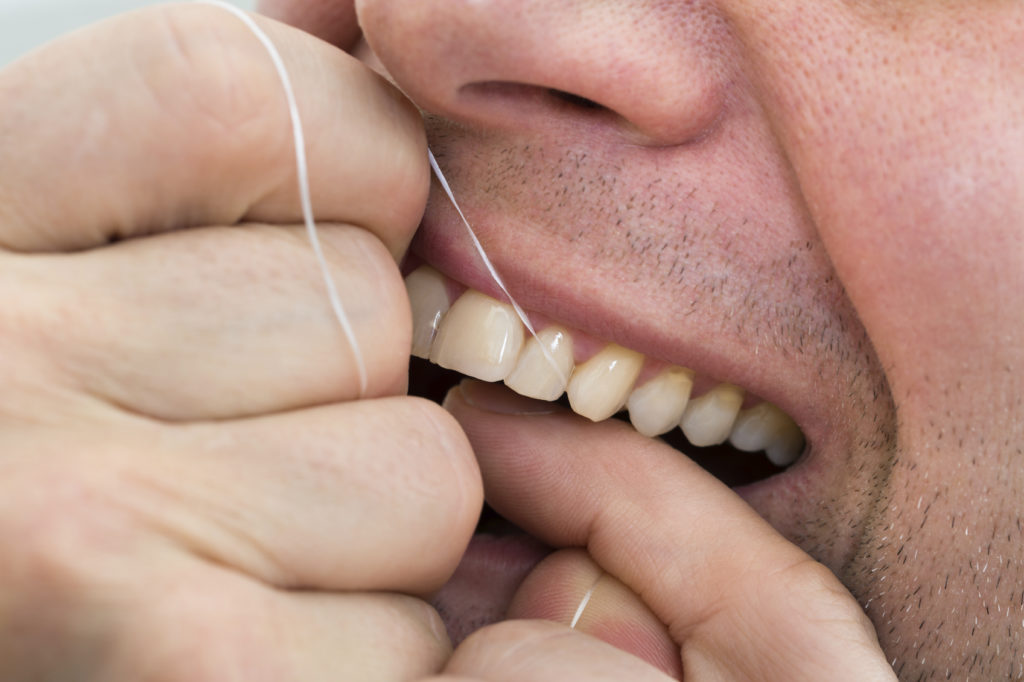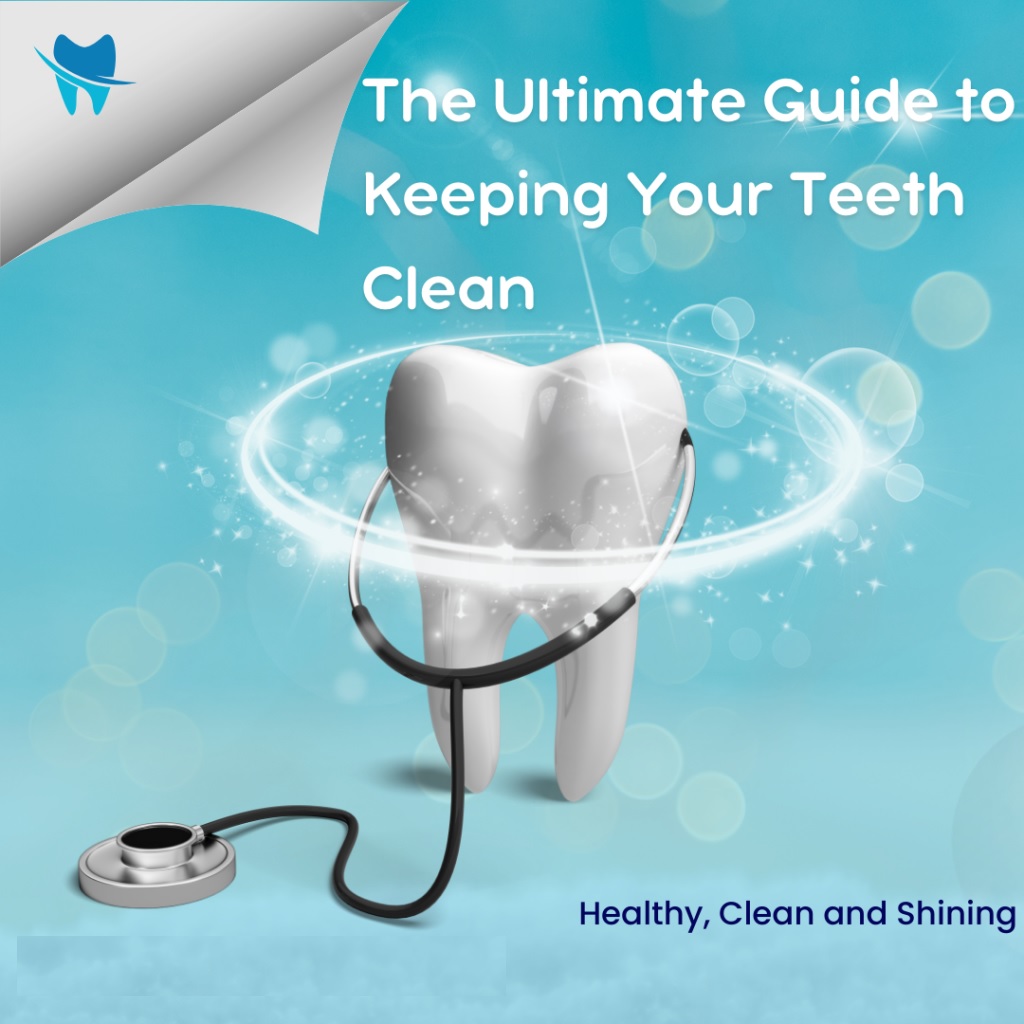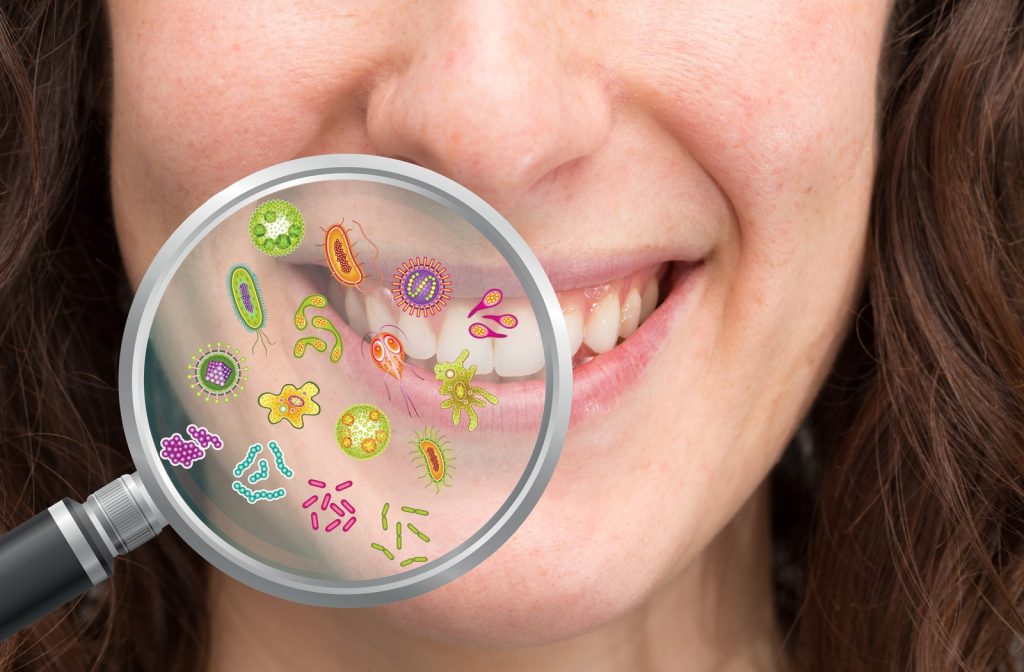purple toothpaste
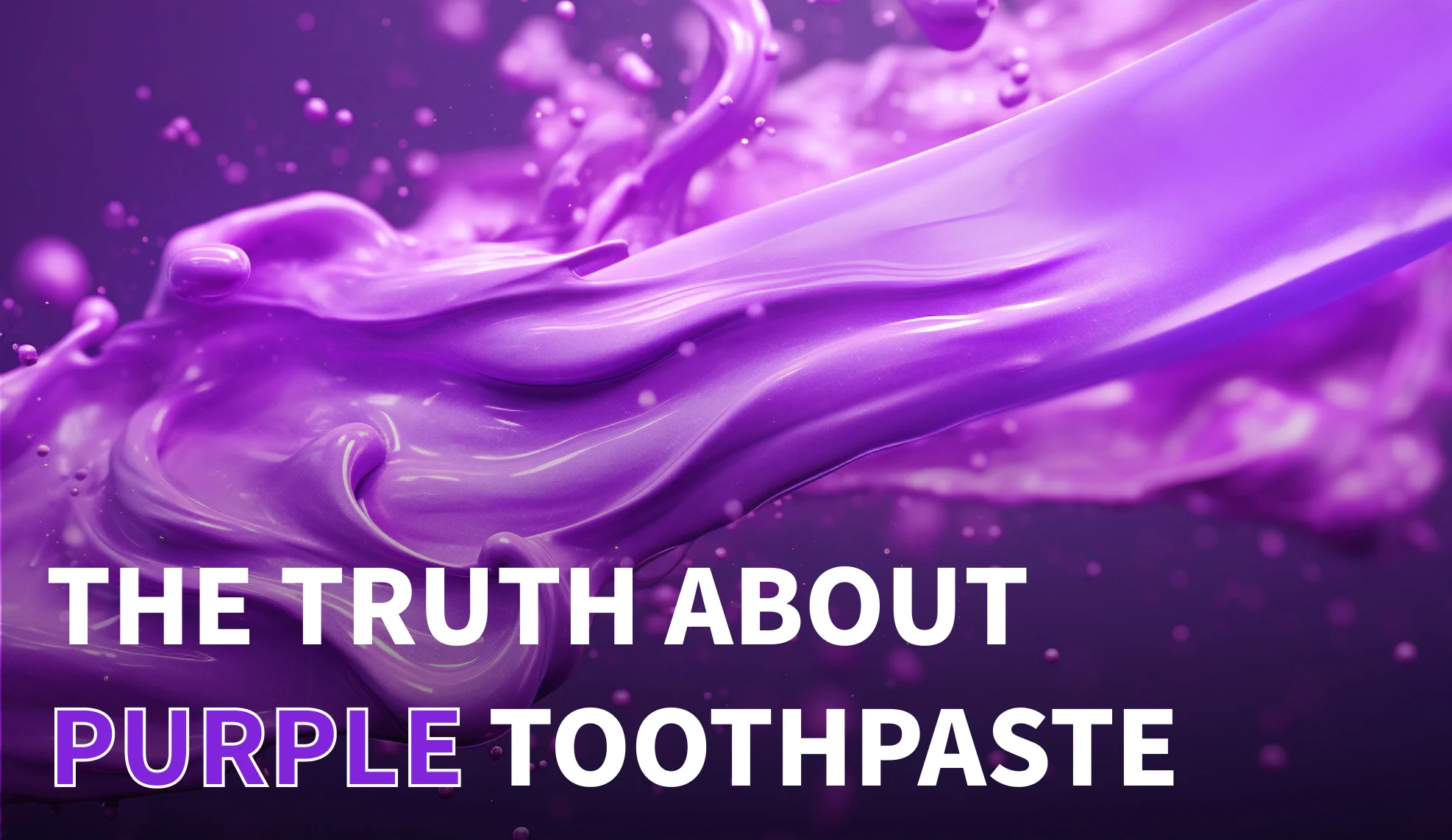
Everything You Need to Know About Purple Toothpaste
When it comes to oral hygiene, toothpaste is a fundamental component. While many are familiar with the standard white or striped varieties, a new trend is emerging: purple toothpaste. This vibrant option isn’t just about aesthetics; it offers unique benefits that can enhance your oral care routine. In this comprehensive guide, we’ll delve into what purple toothpaste is, its benefits, how it works, and much more.
What is Purple Toothpaste?
Purple toothpaste, as the name suggests, is toothpaste with a purple hue. The color isn’t just for show; it often signifies specific ingredients and benefits that differentiate it from traditional toothpaste. These unique formulations are designed to address particular dental concerns, such as teeth whitening, enamel protection, and overall oral health.
The Ingredients Behind Purple Toothpaste
One of the reasons purple toothpaste stands out is its unique ingredient profile. While formulations can vary, common ingredients found in purple toothpaste include:
- Hydrogen Peroxide: Known for its whitening properties, hydrogen peroxide helps remove surface stains on teeth, contributing to a brighter smile.
- Activated Charcoal: This ingredient is renowned for its ability to bind to toxins and plaque, helping to remove them from the surface of the teeth.
- Fluoride: Like many conventional toothpastes, purple toothpaste often contains fluoride, which helps to strengthen tooth enamel and prevent cavities.
- Natural Extracts: Ingredients such as tea tree oil, peppermint, and aloe vera may be included for their antibacterial and soothing properties.
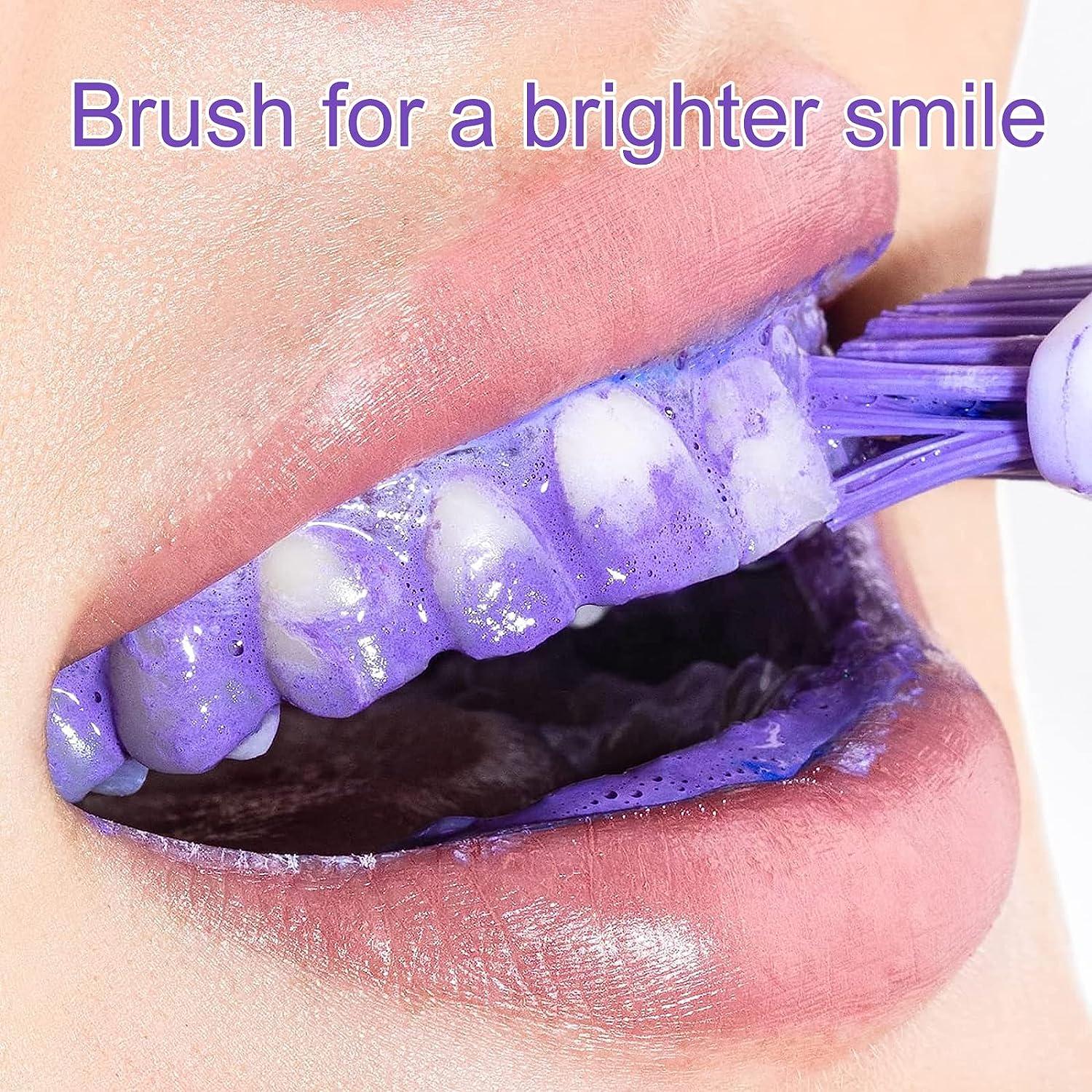
purple toothpaste
How Does Purple Toothpaste Work?
The efficacy of purple toothpaste lies in its ability to combine traditional oral care benefits with advanced whitening techniques. Here’s how it typically works:
- Stain Removal: The active ingredients in purple toothpaste, such as hydrogen peroxide and activated charcoal, help to lift and remove surface stains from the teeth. This results in a whiter, brighter smile over time.
- Enamel Protection: Fluoride helps to remineralize and strengthen tooth enamel, making it more resistant to decay and erosion.
- Antibacterial Action: Natural extracts with antibacterial properties help to reduce harmful bacteria in the mouth, contributing to fresher breath and healthier gums.
- Cosmetic Appeal: The purple hue can have a temporary optical effect, making teeth appear whiter immediately after brushing.
Benefits of Using Purple Toothpaste
Switching to purple toothpaste can offer several unique benefits:
Enhanced Whitening
One of the primary draws of purple toothpaste is its ability to enhance the whiteness of your teeth. The combination of hydrogen peroxide and activated charcoal works effectively to remove surface stains, providing a noticeably brighter smile.
Improved Oral Health
The antibacterial ingredients found in many purple toothpastes help reduce the presence of harmful bacteria in the mouth. This can lead to improved gum health and fresher breath.
Strengthened Enamel
The fluoride content in purple toothpaste helps to remineralize and strengthen tooth enamel, making your teeth more resistant to decay and erosion.
Reduced Sensitivity
Some formulations of purple toothpaste include ingredients designed to reduce tooth sensitivity. This can be particularly beneficial for individuals who experience discomfort when consuming hot or cold foods and beverages.
Aesthetic Appeal
Beyond the practical benefits, purple toothpaste also offers an aesthetic appeal. The vibrant color can make your daily brushing routine feel more enjoyable and unique.
How to Use Purple Toothpaste
Using purple toothpaste is straightforward and similar to using any other toothpaste. Here’s a step-by-step guide:
- Choose Your Brush: Use a soft-bristled toothbrush to avoid damaging your enamel or gums.
- Apply Toothpaste: Squeeze a pea-sized amount of purple toothpaste onto your toothbrush.
- Brush Thoroughly: Brush your teeth for at least two minutes, ensuring you cover all surfaces, including the front, back, and chewing surfaces of your teeth.
- Spit and Rinse: After brushing, spit out the toothpaste and rinse your mouth with water.
- Floss and Rinse: For optimal oral health, follow up with flossing and a mouth rinse if desired.
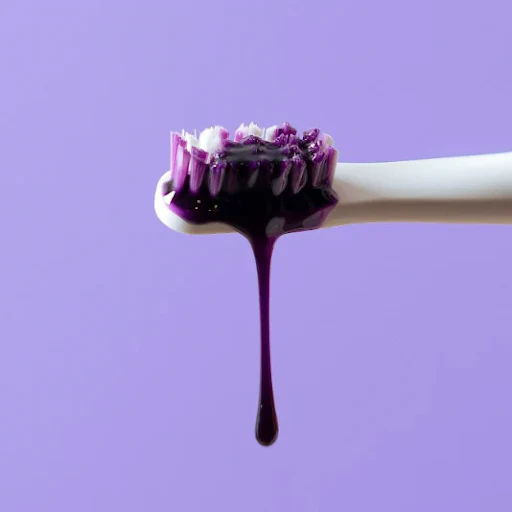
Who Should Use Purple Toothpaste?
Purple toothpaste is suitable for most people looking to enhance their oral care routine, particularly those interested in teeth whitening. However, it may be especially beneficial for:
- Individuals with Stained Teeth: If you have noticeable surface stains from coffee, tea, or smoking, purple toothpaste can help to brighten your smile.
- People Seeking Enhanced Oral Health: The antibacterial properties and enamel-strengthening ingredients can benefit those looking to improve their overall oral health.
- Those with Sensitive Teeth: Some purple toothpaste formulations are designed to reduce sensitivity, making them suitable for individuals with this concern.
Potential Side Effects of Purple Toothpaste
While purple toothpaste offers many benefits, it’s important to be aware of potential side effects:
- Tooth Sensitivity: Some people may experience increased sensitivity due to the whitening agents in the toothpaste. If this occurs, consider alternating with a toothpaste designed for sensitive teeth.
- Gum Irritation: The active ingredients, particularly in high concentrations, can sometimes cause gum irritation. If you notice redness or discomfort, discontinue use and consult your dentist.
- Staining of Dental Work: The vibrant color of purple toothpaste can sometimes temporarily stain dental work such as crowns or veneers. This staining is typically temporary and can be removed with professional cleaning.
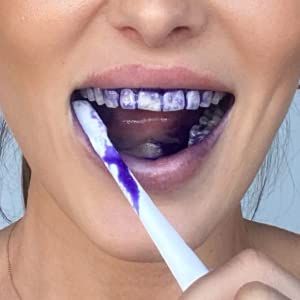
Purple Toothpaste vs. Traditional Toothpaste
When comparing purple toothpaste to traditional toothpaste, several factors come into play:
Whitening Ability
Purple toothpaste is often more effective at removing surface stains due to its active whitening ingredients like hydrogen peroxide and activated charcoal.
Oral Health Benefits
Both types of toothpaste can contain fluoride and antibacterial agents, but purple toothpaste often includes additional natural extracts that can enhance oral health.
Sensory Experience
The unique color and potential flavor variations of purple toothpaste can make brushing more enjoyable compared to traditional options.
Cost
Purple toothpaste can be more expensive than traditional toothpaste due to its specialized ingredients and benefits. However, many users find the additional cost worthwhile for the enhanced results.
Choosing the Best Purple Toothpaste
With several options available, choosing the best purple toothpaste for your needs can be daunting. Here are some tips:
Check the Ingredients
Look for key ingredients such as hydrogen peroxide for whitening, fluoride for enamel protection, and natural extracts for antibacterial benefits.
Read Reviews
User reviews can provide valuable insights into the effectiveness and potential side effects of different purple toothpaste brands.
Consult Your Dentist
If you have specific oral health concerns or are unsure which product is best for you, consult your dentist for personalized recommendations.
Popular Brands of Purple Toothpaste
Several brands have entered the market with their formulations of purple toothpaste. Some popular options include:
- Hismile V34 Colour Corrector: Known for its strong whitening properties and enamel-safe formula.
- Crest 3D White Brilliance: Combines whitening and enamel-strengthening benefits with a vibrant purple hue.
- Colgate Optic White: Offers advanced whitening benefits and a pleasant taste.
Real-Life Testimonials
To better understand the impact of purple toothpaste, let’s look at some real-life testimonials:
Sarah’s Experience
“I switched to purple toothpaste about three months ago, and I’ve noticed a significant improvement in the whiteness of my teeth. The vibrant color also makes brushing more fun, and I love the fresh feeling it leaves in my mouth.”
John’s Story
“As a coffee drinker, my teeth had developed noticeable stains. After using purple toothpaste for a few weeks, I could see a visible difference. My teeth look brighter, and I feel more confident when I smile.”
Emma’s Feedback
“I have sensitive teeth, so I was hesitant to try purple toothpaste. However, the formulation I chose was gentle on my teeth and gums. It’s now a staple in my oral care routine.”
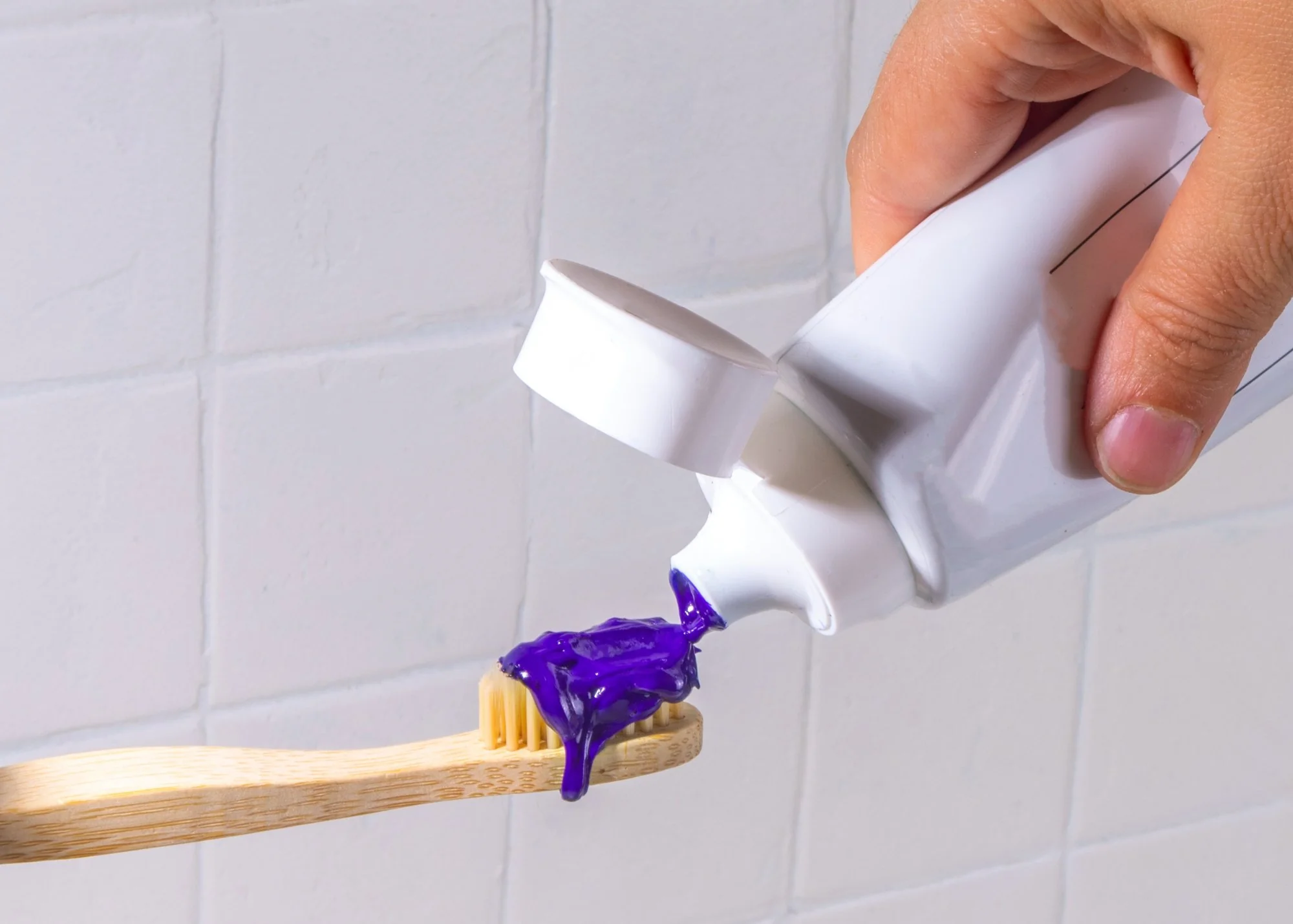
FAQs About Purple Toothpaste
Is purple toothpaste safe to use daily?
Yes, purple toothpaste is generally safe for daily use, provided you follow the recommended guidelines and choose a reputable brand.
Can children use purple toothpaste?
While purple toothpaste is safe for most adults, it’s best to consult with a pediatric dentist before allowing children to use it, especially if it contains strong whitening agents.
How long does it take to see results?
Results can vary, but many users notice a difference in the whiteness of their teeth within a few weeks of regular use.
Can purple toothpaste replace regular toothpaste?
Purple toothpaste can be used as a primary toothpaste, but it may be beneficial to alternate with a standard fluoride toothpaste to ensure comprehensive oral care.
Is purple toothpaste more expensive?
Due to its specialized ingredients, purple toothpaste can be more expensive than traditional toothpaste. However, many users find the additional cost worthwhile for the enhanced benefits.
Conclusion
Purple toothpaste represents an exciting advancement in oral care, offering unique benefits such as enhanced whitening, improved oral health, and a more enjoyable brushing experience. With its vibrant color and effective ingredients, it’s no wonder that purple toothpaste is gaining popularity among those looking to elevate their dental hygiene routine.
Whether you’re struggling with stained teeth, seeking to improve your overall oral health, or simply want to try something new, purple toothpaste could be a valuable addition to your bathroom shelf. As with any oral care product, it’s essential to choose a reputable brand, follow usage guidelines, and consult your dentist if you have any specific concerns.
By incorporating purple toothpaste into your daily routine, you can enjoy a brighter, healthier smile that stands out in more ways than one.
Does purple toothpaste actually work?
Purple toothpaste, often marketed as a “whitening” or “brightening” variant, typically contains ingredients intended to help enhance the appearance of teeth. Here’s what you should know:
- Whitening Claims: Purple toothpaste may claim to offer whitening benefits through various mechanisms. Some variants use abrasive agents to physically remove surface stains, while others incorporate chemicals like hydrogen peroxide to bleach stains.
- Abrasive Nature: Like other whitening toothpastes, purple variants can be abrasive due to their formulation. This abrasiveness helps in removing superficial stains but should be used in moderation to prevent enamel wear and gum irritation.
- Effectiveness: The effectiveness of purple toothpaste in whitening teeth varies. While it can lighten surface stains and improve tooth brightness, results may not be as dramatic or long-lasting as professional whitening treatments offered by dentists.
- Long-Term Use: Consistent use of purple toothpaste, combined with good oral hygiene practices, such as regular brushing and professional dental cleanings, can help maintain a brighter smile over time.
Ultimately, the extent of whitening achieved with purple toothpaste depends on individual dental hygiene habits, existing stains, and expectations. For significant whitening results, professional dental treatments may be necessary.
Is purple toothpaste FDA approved?
Toothpastes, including purple variants, generally fall under the regulatory oversight of the FDA (Food and Drug Administration) in the United States. Here’s what you should know about FDA approval:
- Regulatory Authority: The FDA regulates toothpaste as a cosmetic product if it makes cosmetic claims (like whitening) or as a drug if it claims therapeutic benefits (like cavity prevention or sensitivity relief).
- Approval Process: Manufacturers are responsible for ensuring their toothpaste products are safe and effective for their intended use. FDA approval involves evaluating ingredients, manufacturing processes, labeling, and marketing claims to ensure compliance with regulatory standards.
- Compliance: While specific FDA approval may not be required for every toothpaste variation, manufacturers must comply with FDA regulations to ensure product safety and efficacy.
Consumers can check toothpaste labels for FDA compliance statements or look for products with ADA (American Dental Association) Seal of Acceptance, which indicates adherence to rigorous safety and efficacy standards.
Is Colgate purple toothpaste good?
Colgate, a prominent oral care brand, offers various toothpaste formulations to address different oral health needs, including whitening. Here’s what to consider about Colgate’s purple toothpaste:
- Product Claims: Colgate purple toothpaste variants typically claim to provide whitening or brightening benefits. These claims are often supported by ingredients designed to remove surface stains and enhance tooth appearance.
- Brand Reputation: Colgate is known for its extensive research and development in oral care products. Their formulations often include fluoride for cavity protection and other ingredients aimed at improving oral hygiene.
- User Experience: Consumer reviews and clinical studies suggest that Colgate’s purple toothpaste can effectively lighten surface stains and contribute to a brighter smile with regular use.
- Consultation: For personalized oral care recommendations, including the suitability of Colgate purple toothpaste for your specific dental needs, consulting with a dentist can provide tailored guidance.
Overall, Colgate purple toothpaste can be a good choice for individuals seeking a toothpaste that helps whiten teeth while maintaining good oral hygiene practices.
Does Colgate have purple toothpaste?
Yes, Colgate offers purple toothpaste variants designed to provide whitening or brightening benefits. These products are formulated to help remove surface stains and enhance the appearance of teeth. Key considerations include:
- Whitening Properties: Colgate purple toothpaste typically contains ingredients such as silica or baking soda, which act as mild abrasives to polish away stains.
- Fluoride Content: Many Colgate toothpaste variants include fluoride, which helps strengthen tooth enamel and protect against cavities.
- Usage Instructions: Follow the manufacturer’s instructions for optimal results. Regular brushing with Colgate purple toothpaste, combined with other oral hygiene practices, can help maintain oral health and brightness.
Choosing the right toothpaste, including Colgate’s purple variants, depends on individual oral health needs and preferences. Consulting with a dentist can provide guidance on selecting the most suitable toothpaste for achieving and maintaining a healthy, bright smile.
Do dentists recommend purple toothpaste?
Dentists’ recommendations regarding purple toothpaste, or any specific variant, can vary based on individual patient needs and oral health conditions. Here are some considerations:
- Whitening Claims: Purple toothpaste often promotes whitening benefits through ingredients like abrasives or mild bleaching agents. Dentists may recommend these products for patients seeking to reduce surface stains and enhance tooth brightness.
- Caution with Abrasiveness: Dentists typically advise using whitening toothpaste, including purple variants, in moderation. Excessive use of abrasive toothpastes can wear down enamel over time, leading to tooth sensitivity and other dental issues.
- Professional Guidance: For individuals with sensitive teeth, gum problems, or specific dental conditions, dentists can provide personalized recommendations on the most suitable oral care products, including toothpaste.
Overall, while dentists may endorse purple toothpaste for its whitening benefits, they often emphasize the importance of balanced oral care routines and regular dental check-ups for optimal oral health.
How to permanently whiten teeth?
Achieving permanent teeth whitening typically involves professional treatments and consistent oral hygiene practices. Here’s a comprehensive approach:
- Professional Whitening: Consult a dentist for in-office whitening procedures using stronger bleaching agents. These treatments provide quick and noticeable results, often with longer-lasting effects compared to over-the-counter products.
- At-Home Kits: Dentist-supervised at-home whitening kits, with custom-fitted trays and professional-grade bleaching gels, can effectively lighten teeth over time with regular use.
- Good Oral Hygiene: Brush teeth at least twice daily with fluoride toothpaste to remove surface stains and prevent new discoloration. Floss daily to clean between teeth and prevent plaque buildup.
- Avoid Staining Foods: Limit consumption of coffee, tea, wine, and other foods and beverages known to stain teeth. Rinse your mouth with water after consuming staining substances.
- Regular Dental Visits: Schedule routine dental cleanings and check-ups to maintain oral health and address any concerns about teeth discoloration or sensitivity.
By combining professional treatments, diligent oral care habits, and lifestyle adjustments, you can achieve and maintain a brighter smile over the long term.
How to get whiter teeth naturally?
Natural methods can complement oral care routines to help whiten teeth gradually. Here are some effective approaches:
- Baking Soda Paste: Mix baking soda with water to form a paste and brush gently. Baking soda’s mild abrasiveness helps polish away surface stains.
- Oil Pulling: Swish coconut oil or sesame oil in your mouth for 15-20 minutes before brushing. Oil pulling may help remove bacteria and promote oral hygiene.
- Hydrogen Peroxide Rinse: Dilute hydrogen peroxide with water (1:1 ratio) and swish in your mouth for 1-2 minutes before spitting it out. Hydrogen peroxide has bleaching properties that can lighten stains.
- Apple Cider Vinegar Rinse: Use diluted apple cider vinegar as a mouthwash, swishing for a few seconds before rinsing with water. Its acidity may help remove surface stains, but use sparingly to avoid enamel erosion.
- Dietary Adjustments: Consume crunchy fruits and vegetables like apples, carrots, and celery, which can help scrub away plaque and stains naturally.
While natural methods can support teeth whitening, their effectiveness varies, and results may take time. For significant whitening, consider combining natural approaches with professional dental treatments.
Can you use purple toothpaste every day?
Using purple toothpaste daily is generally safe, but it’s essential to consider a few factors:
- Abrasive Content: Purple toothpaste, like other whitening variants, may contain abrasive agents to polish away surface stains. Prolonged or aggressive use can potentially wear down enamel and irritate gums.
- Moderation: Follow manufacturer instructions for proper use and duration. If you experience tooth sensitivity or gum irritation, consider reducing the frequency of use or switching to a less abrasive toothpaste.
- Professional Advice: Consult with a dentist, especially if you have sensitive teeth or existing dental issues, to determine the most suitable toothpaste for your oral care needs.
Using purple toothpaste as part of a balanced oral hygiene routine, alongside regular brushing, flossing, and dental check-ups, can help maintain a bright and healthy smile.
Is teeth whitening safe?
Teeth whitening, when performed under professional supervision or using ADA-approved products, is generally considered safe. Here’s what to know:
- Professional Supervision: In-office teeth whitening treatments administered by dentists ensure proper application of bleaching agents and minimize risks.
- Over-the-Counter Products: Whitening toothpaste, strips, and gels available at pharmacies are generally safe when used as directed. However, prolonged or excessive use can lead to enamel erosion and tooth sensitivity.
- Potential Risks: Common side effects of teeth whitening may include temporary tooth sensitivity and gum irritation. These effects usually resolve once treatment is discontinued.
- Consultation: Before starting any teeth whitening regimen, consult with a dentist to assess oral health and determine the most appropriate whitening method based on individual needs.
By following professional guidance and using whitening products responsibly, you can achieve a brighter smile while maintaining optimal oral health.
Which brand of purple toothpaste is best?
Determining the best brand of purple toothpaste depends on individual preferences and oral health needs. Some popular brands offering purple toothpaste variants include:
- Colgate: Known for a range of oral care products, Colgate offers purple toothpaste formulations designed to whiten teeth and maintain oral hygiene.
- Crest: Another well-established brand, Crest provides purple toothpaste options aimed at enhancing tooth brightness and removing surface stains.
- Sensodyne: Recognized for sensitivity relief, Sensodyne also offers variants that incorporate whitening benefits, including purple toothpaste options.
- Arm & Hammer: Known for baking soda-based toothpaste, Arm & Hammer includes purple variants designed to polish away stains and freshen breath.
Choosing the best brand of purple toothpaste involves considering factors such as whitening efficacy, sensitivity relief, flavor preferences, and adherence to oral care needs. Consulting with a dentist can provide personalized recommendations based on your dental health status.
What is the best tooth whitening product?
The best tooth whitening product varies based on individual needs and preferences. Effective options include:
- Professional Whitening Treatments: In-office treatments supervised by dentists offer fast and significant results using potent bleaching agents.
- At-Home Whitening Kits: Dentist-prescribed kits with custom-fitted trays and professional-grade bleaching gels provide effective whitening over time.
- Over-the-Counter Products: Whitening toothpaste, strips, and gels available at pharmacies offer convenience and varying degrees of whitening effectiveness.
- Natural Remedies: Baking soda, hydrogen peroxide, and activated charcoal may provide mild whitening effects when used responsibly.
Choosing the best tooth whitening product involves considering factors such as desired whitening level, budget, oral health conditions, and sensitivity concerns. Consulting with a dentist can help determine the most suitable option for achieving a brighter smile safely.
What whitens teeth?
Several ingredients and methods can help whiten teeth effectively:
- Hydrogen Peroxide: Found in many whitening products, hydrogen peroxide bleaches stains on tooth enamel.
- Carbamide Peroxide: Often used in professional and at-home whitening kits, carbamide peroxide breaks down into hydrogen peroxide and urea, effectively whitening teeth.
- Abrasive Agents: Mild abrasives like silica or baking soda physically polish away surface stains on teeth.
- Bleaching Agents: Chemicals like hydrogen peroxide or carbamide peroxide penetrate tooth enamel to lighten deeper stains.
- Professional Treatments: In-office procedures supervised by dentists use stronger bleaching agents and specialized equipment for significant whitening results.
- Natural Remedies: Some natural methods, like oil pulling with coconut oil or using baking soda paste, may provide mild whitening effects through their abrasive or cleansing actions.
The effectiveness of whitening methods varies, and results depend on factors such as product formulation, consistency of use, and individual dental characteristics. Consulting with a dentist can help determine the most appropriate whitening approach based on your oral health needs and goals.
How to apply purple toothpaste?
Applying purple toothpaste follows the same basic principles as applying regular toothpaste. Here’s a step-by-step guide:
- Preparation: Wet your toothbrush with water to soften the bristles slightly.
- Dispensing Toothpaste: Squeeze an appropriate amount of purple toothpaste onto the bristles. The amount typically recommended is a pea-sized dab for adults.
- Brushing Technique: Hold the toothbrush at a 45-degree angle to your gums. Use gentle, circular motions to brush all surfaces of your teeth — front, back, and chewing surfaces.
- Duration: Brush for at least two minutes to ensure thorough cleaning and to allow the active ingredients in the toothpaste to work effectively.
- Rinsing: Spit out the toothpaste after brushing, but avoid rinsing immediately to allow the fluoride or whitening agents to remain on your teeth longer for better effectiveness.
- Frequency: Use purple toothpaste twice daily as part of your regular oral hygiene routine, unless otherwise directed by your dentist.
By following these steps, you can effectively apply purple toothpaste to help maintain oral hygiene and potentially enhance tooth brightness.
Are purple toothpastes safe?
Purple toothpastes, like other oral care products, are generally safe when used as directed. Here are key considerations:
- Ingredients: Check the label for ingredients and potential allergens. Purple toothpastes may contain abrasives or mild bleaching agents aimed at whitening teeth.
- Usage Guidelines: Follow manufacturer instructions regarding frequency and duration of use. Excessive or improper use of abrasive toothpastes can lead to enamel wear and gum irritation.
- Dental Consultation: If you have sensitive teeth, gum issues, or specific dental concerns, consult with a dentist before using purple toothpaste to ensure it’s suitable for your oral health needs.
By using purple toothpaste responsibly and in conjunction with regular dental check-ups, you can maintain oral health while potentially benefiting from its whitening properties.
Does gargling coconut oil whiten teeth?
Gargling coconut oil, also known as oil pulling, is sometimes promoted as a natural method to whiten teeth. Here’s how it may work and what to consider:
- Mechanism: Oil pulling involves swishing coconut oil around in your mouth for 15-20 minutes, similar to a mouthwash. The oil supposedly adheres to plaque and bacteria, which are then expelled when you spit out the oil.
- Potential Benefits: Advocates suggest that oil pulling may help remove surface stains from teeth, leading to a brighter smile over time.
- Effectiveness: While oil pulling may contribute to oral hygiene by reducing bacteria and plaque buildup, its ability to whiten teeth significantly is debated. Any whitening effects are likely mild and gradual.
- Caution: Oil pulling should not replace regular brushing and flossing. Prolonged swishing of oil in the mouth can potentially lead to jaw fatigue or accidental ingestion of oil, which may cause digestive discomfort.
Overall, while oil pulling with coconut oil may have oral hygiene benefits, including fresher breath and potential mild stain removal, its effectiveness as a standalone whitening method is limited compared to professional treatments or whitening toothpaste.
Which is No 1 toothpaste?
Determining the “No. 1” toothpaste depends on various factors, including consumer preferences, dentist recommendations, and product performance. Some top toothpaste brands globally, recognized for their quality and effectiveness, include:
- Colgate: Known for a wide range of oral care products, including cavity protection, sensitivity relief, and whitening toothpastes.
- Crest: Popular for its fluoride toothpaste formulations aimed at cavity prevention and teeth whitening.
- Sensodyne: Renowned for toothpaste variants designed to alleviate tooth sensitivity while promoting oral health.
- Arm & Hammer: Notable for baking soda-based toothpastes known for their natural whitening and freshness benefits.
The “No. 1” toothpaste can vary based on individual needs, such as cavity prevention, sensitivity relief, whitening, or specific oral health concerns. Choosing the best toothpaste involves considering factors like fluoride content, ADA approval, flavor preferences, and dental recommendations.
Does HiSmile really work?
HiSmile is a brand known for its teeth whitening products, including whitening kits and oral care products. The effectiveness of HiSmile products can vary among users. Here are key points to consider:
- Whitening Kits: HiSmile offers at-home whitening kits containing peroxide-based gel and LED light devices. These kits aim to lighten teeth by reducing surface stains and enhancing brightness.
- User Reviews: Consumer reviews on HiSmile products are mixed, with some users reporting satisfactory results in terms of whitening, while others may experience minimal changes or sensitivity.
- Professional Input: While at-home whitening kits can offer convenience, professional dental consultations are recommended for personalized advice on safe and effective whitening options.
- Safety Considerations: Follow manufacturer instructions and use HiSmile products as directed to minimize potential risks like tooth sensitivity or gum irritation.
For individuals considering HiSmile or similar products, consulting with a dentist can provide guidance on the most suitable whitening method based on oral health status and whitening goals.
Do whitening strips work?
Whitening strips are thin, flexible strips coated with a peroxide-based gel designed to whiten teeth. Here’s what to know about their effectiveness:
- Mechanism: Whitening strips adhere to teeth, allowing the peroxide gel to come into direct contact with the enamel. The gel penetrates the enamel to lighten stains.
- Effectiveness: Whitening strips can effectively lighten surface stains on teeth when used consistently over several weeks. Results vary among individuals based on the severity of stains and adherence to usage instructions.
- Usage Guidelines: Follow manufacturer instructions regarding application time and frequency. Overuse or improper application can lead to tooth sensitivity or gum irritation.
- Professional Recommendations: Dentists can provide professional-grade whitening strips or recommend in-office treatments for more significant and controlled whitening results.
Whitening strips can be a convenient option for achieving a brighter smile at home. For optimal results and safety, consult with a dentist to determine the best whitening method based on your oral health needs and preferences.
These answers aim to provide comprehensive insights into various oral care topics, helping you make informed decisions about toothpaste, whitening methods, and oral hygiene practices.

